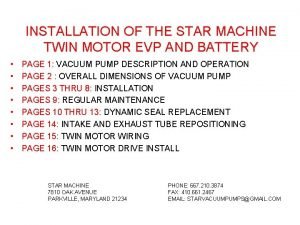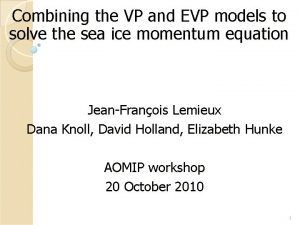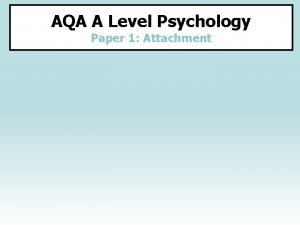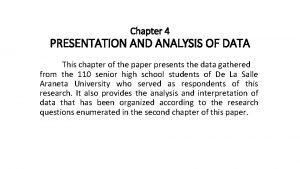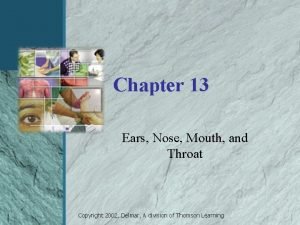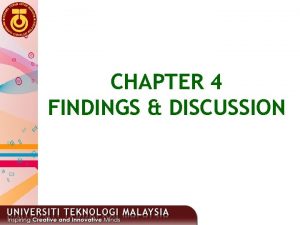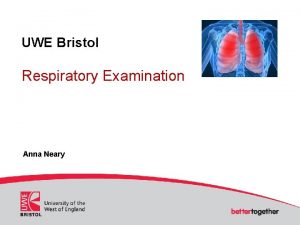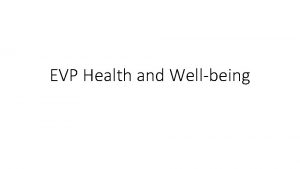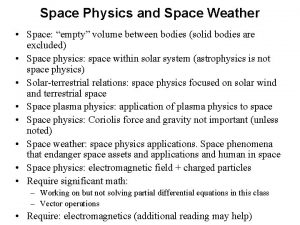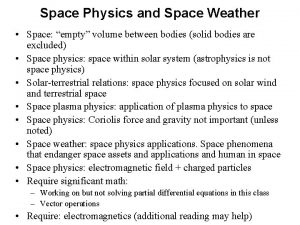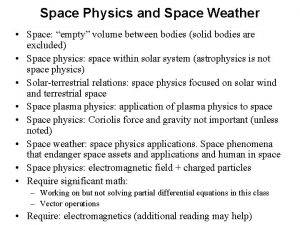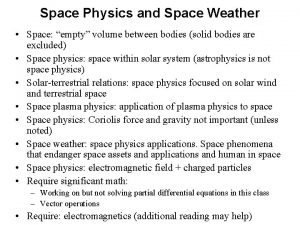Findings and trends from the Co Space EVP















- Slides: 15

Findings and trends from the Co. Space / EVP series of flight deck experiments on ASAS spacing Karim Zeghal EUROCONTROL Experimental Centre ASAS-TN, 19 -21 April 2004, Toulouse 1

Motivation ü Motivation • Identify a more effective allocation of spacing tasks between controller and flight crew • One option to improve air traffic management • Neither “transfer problems” nor “give more freedom” to pilots … shall be beneficial to all parties ü Constraints • Human: consider current roles and working methods • System: keep things as simple as possible ü Assumptions • Airborne surveillance capabilities (ADS-B, “state vectors”) • Airborne functions (ASAS, “manual mode”) 2

Principle ü Principles • Use of spacing instructions (not separation not clearance) to be used with current practices • No modification of responsibility for separation provision • Flight crew tasked by the controller to maintain a given spacing to a designated aircraft • FAA/Eurocontrol PO-ASAS, ICAO SCRSP ASAS circular ü Expected benefits • Increase of controller availability, leading to improve safety • … in turn: better traffic management and, depending on airspace constraints, more capacity • Gain in awareness and anticipation for flight crew ü Two classes of operations • Crossing and passing • Sequencing of arrival flows 3

Stepwise validation ü Air & ground • Two streams of experiments with unified perspective ü Operational • Start in cruise (extended TMA) and progressively get closer to the runway (TMA) ü Validation • Start assessing usability and progressively address impact on user activity and eventually on the ATC system ü Technology • Start with a basic working environment and progressively introduce assistance and technology when need clearly identified 4

Stepwise validation CRZ-IAF air CRZ-FAF IFATCA’ 98 ground Ext TMA Enroute Ext TMA TMA 1998 1999 2000 2001 2002 TMA 2003 5

Starting point 6

From usability to activity 7

More assistance, more realism 8

Getting down to final with time 9

More complex scenarios 10

Stepwise validation CRZ-IAF air CRZ-FAF IFATCA’ 98 ground Ext TMA Enroute Ext TMA TMA 1998 1999 2000 2001 2002 TMA 2003 11

Experiment set-up ü Objective • Extend the scope to the approach phase, with time based spacing ü Environment • Paris South arrival flights, from cruise to final approach (~40 minutes flight time) • Recorded scenario including ATC instructions and background traffic • Target under conventional control ü Flight deck • Flight crew tasks: automatic flight, checklist, operational flight plan, ATIS, briefing, and manual speed adjustments • Cockpit simulator: A 320 FMGS trainer from FAROS ü Flight crew • 12 Airbus rated airline pilots ü Exercises • Achieved: 24 runs in time, 6 in distance, 12 in conventional 12

Activity Ok 13

Spacing performance Tolerance Maximum 5 s 4. 6 s ü Average deviation well below tolerance ü No loss of spacing Average 0. 9 s 15

Findings ü Benefits • Positive feedback on concept (active part, being “in the loop”, understanding of the situation, more anticipation) • Spacing feasible (e. g. ± 5 s) until final approach, with limited assistance, at acceptable workload (under nominal conditions) ü Limits • Where to end spacing on final (at FAF, before or later)? • Under which degraded situations (aircraft, meteo, …) spacing still feasible? ü Issues • New task with potential risk of workload increase (appropriate level of assistance) • Preceding pilot behaviour? Risk of oscillatory effects? 16
 Evp design
Evp design Motur evp
Motur evp Vp vs evp
Vp vs evp Evp connect
Evp connect Hygienal
Hygienal Presenting insights and findings
Presenting insights and findings Attachment types psychology a level
Attachment types psychology a level Presentation and analysis of data
Presentation and analysis of data Mouth and throat assessment normal findings
Mouth and throat assessment normal findings Findings and discussion
Findings and discussion Conclusion for lamb to the slaughter
Conclusion for lamb to the slaughter Example of data analysis in research
Example of data analysis in research Chapter 4 findings and discussion
Chapter 4 findings and discussion Qualitative paper example
Qualitative paper example Vocal fremitus
Vocal fremitus Example of findings in research
Example of findings in research

